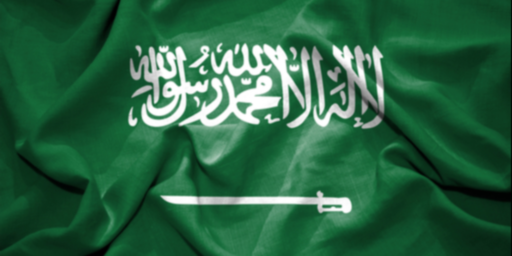INSURGENCY REPORT
Ahmed S. Hashim of the Middle East Institute has an interesting policy paper online detailing the shift from conventional war to insurgency in Iraq. It is long enough to defy useful excerpting of all its major points in this forum, so I’ll concentrate on one of them:
Despite some evidence that the Ba’thist regime had planned all along on a post-war insurgency after its formal defeat, the insistent claim by U.S. authorities, that the attacks are solely the work of remnants of the former regime is incorrect. Statements have been put out by various organizations claiming credit for the attacks. Based on their respective clandestine statements they seem to be made up of the following groups of nationalist and religious provenance:
[I have used single quotes in place of the diacritical marks in the original owing to the limitations of my posting software. I have also eliminated footnote references. -ed.]
The General Command of the Armed Forces, Resistance and Liberation in Iraq, Popular Resistance for the Liberation of Iraq, and Patriotic Front:These three are most likely composed of former Iraqi military personnel, particularly from the Special Republican Guards, security and intelligence personnel, Ba’th party members and the paramilitary Fida’iyin. These members of the former regime are not averse to giving their cells Islamic names. Al ‘Awdah (The Return), Jihaz al-i’ilam al-siyasi lil hizb al-Ba’th (Political Media Organ of the Ba’th Party), Harakat Ra’s al-‘Afa (Snake’s Head Movement): The first is a group that came into prominence in mid-June. It is made up of former security service members and soldiers of the former Iraqi armed forces organized in cells spread throughout cities such as Baghdad, Mosul, Ramadi. There are reports that the pro-Saddam elements of the Ba’th party have actually re-named the party to Al ‘Awdah. 17 The second has described itself as the political and media organ of the Ba’th party. The third named group is also Ba’thist and has links to Sunni Arab tribes. Nasserites: A small group of non-Ba’thist pan-Arab nationalists of little significance. Their only claim to fame apart from allegedly successful attacks on U.S. forces is their success of making enemies of almost all other Iraqi political groups, whether insurgent or involved in the political process under the auspices of the Coalition Political Authority. Thuwwar al-‘arak — kata’ib al-anbar al-musallahah (Iraq’s Revolutionaries — Al-Anbar Armed Brigades): This is an anti-Saddamist nationalist insurgent group based in Al-Anbar governorate. General Secretariat for the Liberation of Democratic Iraq: This is an anti-Saddam leftist nationalist group which condemns the coalition authority for failing to provide security basic services to the population. Munazzamat al-alam al-aswad: (Black Banner Organization): This organization’s propaganda seems to indicate that it has nationalist and religious tendencies. It has called for sabotage of oil industry to prevent it from falling to the hands of the West. Unification Front for the Liberation of Iraq: Little is known about this group except that it is an anti-Saddamist and anti-Ba’thist one which has called upon all Iraqi forces to fight the U.S. occupation. National Front for the Liberation of Iraq: This sounds like the name of a secular resistance organization, but it is apparently an organization that incorporated elements of both the regime and religious tendencies because it accepted individuals from the Republican Guards into its ranks. It was also one of the first to appear during the war. It issued its first communiques in April and actually claimed that it had tried to assassinate Ahmed Chalabi but only succeeded in killing some of his supporters in an attack in Al-Najaf. Al-Faruq Brigades: This group refers to itself as the military arm of an Islamic resistance organization called the Islamic Movement in Iraq, or Al-Harakah al-Islamiyyah fi al-arak. The Brigades were stood up in early June and might include secular Sunni Arabs and individuals from now defunct organizations of the former regime. The Al-Faruq Brigades have set up small units or “squadrons” which they give Islamic names; squadrons exist for different specialties, e.g. there are reconnaissance squadrons and combat squadrons. Mujahideen al ta’ifa al-Mansoura (Mujahideen of the Victorious Sect): This includes non-Iraq Sunni Islamist elements or even Sunni fundamentalist elements of neo-salafi background. Its military arm is known as the Martyr Khattab Brigade. Kata’ib al mujahideen fi al-jama’ah al-salafiyah fi al-‘arak (Mujahideen Battalions of the Salafi Group of Iraq): This is a Sunni Islamist group which claims as its spiritual mentor the Palestinian Islamist, ‘Abdallah Azzam, who fought with the Afghan Mujahideen with his acolyte, Usama Bin Laden. Jihad Brigades/Cells: This group emerged in late July 2003 but little is known about it except it has called for guerilla warfare and threatened to execute “spies and traitors,” i.e. those who are seen as collaborating with the U.S. occupation.
Just the sheer length of the list shows the magnitude of the task ahead.




I am not a member of the Middle East Institute; i work for the naval war college.
—